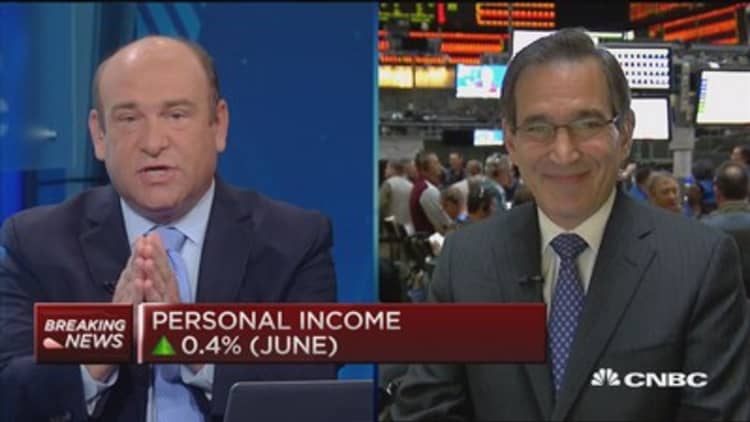
U.S. consumer spending in June recorded its smallest gain in four months as demand for automobiles softened, suggesting the economy lost some momentum at the end of the second quarter.
The Commerce Department said on Monday that consumer
spending rose 0.2 percent after a downwardly revised 0.7 percent increase in May. Consumer spending, which accounts for more than two-thirds of U.S. economic activity, was previously reported to have advanced 0.9 percent in May.
Read MoreOdds of a September rate hike at 55%: JPMorgan
June's increase was in line with economists' expectations.
The data was included in last week's second-quarter gross domestic product report, which showed consumer spending expanding at a 2.9 percent annual rate and the overall economy growing at a 2.3 percent pace.
While the tepid consumer spending suggests less vigor in the economy heading into the third quarter, any slowdown is likely to be mitigated by a strengthening housing sector and tightening labor market.
The Federal Reserve last week described the economy as expanding "moderately," upgraded its view of the labor market and said housing had shown "additional" improvement.
The Fed's assessment left the door open for a possible interest rate hike in September, which would be the first increase in nearly a decade.
In June, spending on long-lasting goods such as automobiles fell 1.3 percent, reversing the prior month's increase. Outlays on services like utilities rose 0.4 percent.
When adjusted for inflation, consumer spending was unchanged after increasing 0.4 percent in May.
Personal income rose 0.4 percent in June for a third straight month. With income gains outpacing spending, the saving rate increased to 4.8 percent from 4.6 percent in May.
Read MoreConsumer sentiment hits lowest level since May
Inflation pressures remained benign. A price index for consumer spending rose 0.2 percent after gaining 0.3 percent in May. In the 12 months through June, the personal consumption expenditures (PCE) price index rose 0.3 percent.
Excluding food and energy, prices edged up 0.1 percent for the third straight month. The so-called core PCE price index rose 1.3 percent in the 12 months through June. It has increased by the same margin since January.
Inflation is running below the Fed's 2 percent target.

